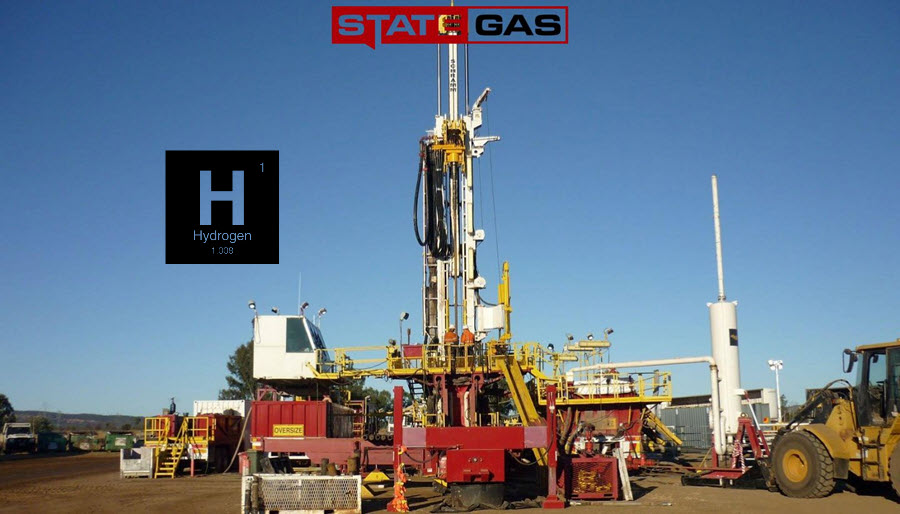
Brisbane, Australia — State Gas Limited (ASX:GAS) announces its collaboration with Rockminsolutions Pty Ltd (‘Rockminsolutions’) to investigate the manufacture of low emission hydrogen with carbon sequestration in the west of its 100%-owned ATP 2062 Rolleston-West Gas Project.
Highlights
- State Gas enters into Memorandum of Understanding (MoU) with Rockminsolutions toinvestigate carbon sequestration and low emission hydrogen.
- Hydrogen to be manufactured from gas, with carbon to be securely stored based on aproven process being implemented in Iceland and elsewhere in Europe.
- Dissolved carbon dioxide to be pumped underground, to form solid-form carbonateminerals for long term, safe and stable storage.
- Proposed project site on the western border of State Gas’ 100%-owned ATP 2062Rolleston-West Project in Central Queensland.
State Gas has entered into a MoU with basalt specialist Rockminsolutions to investigate the potential to sequester carbon dioxide in the Buckland Basaltic Sequence within and surrounding the western area of ATP 2062. The carbon mineralisation technique is based on a process currently being successfully implemented by Carbfix (www.carbfix.com) at the Hellisheidi power plant in Iceland. Carbfix has developed a novel approach to capturing and storing CO2 by its capture in water and injection of the solution into suitable subsurface basalts. The Hellisheidi carbon mineralisation project in Iceland has attracted high-profile investors including Microsoft Corp. founder Bill Gates.
The western area of ATP 2062 contains a large portion of the Buckland Basaltic Sequence, an extensive area of Tertiary aged basaltic ignimbrites (volcanic ash deposits) up to 330m thick, having similarities with basaltic rocks at Hellisheidi in Iceland.
Under the Carbfix process, carbon dioxide is dissolved in water and pumped into a favourable rock formation. The solution then reacts with minerals present in the rock to create carbonates such as calcium carbonate and magnesium carbonate. In these forms, the carbon is stable and safe and can be expected to remain so for thousands of years. In its trials in Iceland, Carbfix has found this process has resulted in more than 95% of carbon mineralising underground within two years.
Basaltic ignimbrites such as those in the Buckland Basaltic Sequence within and adjacent to ATP 2062 are considered to have the greatest potential for the sequestration of carbon by this process. Basalt rocks are highly reactive and contain the elements needed for permanently immobilising carbon dioxide through the formation of carbonate minerals. When in the form of non-welded ignimbrites, the basalt is likely to be very permeable and porous, containing storage space for the mineralised carbon.
Dissolving the carbon dioxide in water creates a stable solution which can be readily pumped into formations much shallower than those required for traditional carbon sequestration. The high porosity of the rock is expected to facilitate the retention of the carbonated water without the need for a geological seal. As a result, the Carbfix process has the potential to provide a more secure carbon storage solution at substantially lower cost than traditional processes.
Should investigation of the project area confirm the potential of the Buckland Basaltic Sequence to store carbon dioxide, State Gas and Rockminsolutions envisage manufacturing hydrogen from gas, which may be sourced from State Gas’ Rolleston-West or adjacent Reid’s Dome Projects. Carbon dioxide created through the process would be stored within the Basaltic sequence underground, creating a safe and sustainable low emission hydrogen.
State Gas Executive Chairman, Richard Cottee, said that the Company was very pleased to enter into the hydrogen and sequestration initiative with Rockminsolutions.
“While State Gas remains focussed on development of its Reid’s Dome and Rolleston-West Gas Projects, the carbon mineralisation approach has the potential to be a game changer in the production of low emission hydrogen from gas”, he said. “A combined gas and hydrogen portfolio would provide significant optionality for State Gas into the future.”
“State Gas is committed to reducing its carbon footprint whilst ensuring there are sufficient supplies of natural gas, and eventually hydrogen, to enable the transition to a lower carbon future. Hopefully this MOU will bring the technology forward to coincide with the development of the Rolleston-West Gas Project in Central Queensland”, Mr Cottee said.
“With worldwide gas prices at decades’ highs, State Gas remains focussed on bringing its Reid’s Dome and Rolleston-West gas to the east coast market. Our gas projects are not restricted by domestic gas reservation requirements, providing even more optionality for commercial opportunities over the next few years.”
Read the most up to date Fuel Cell and Hydrogen Industry news at FuelCellsWorks




